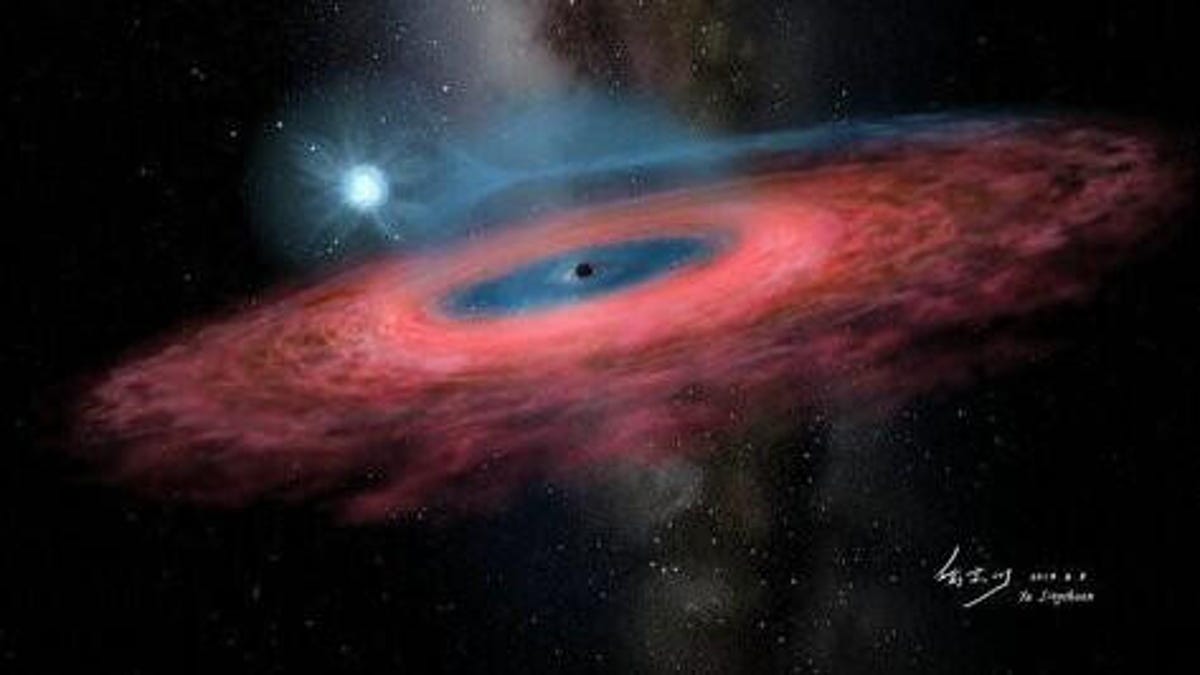Monster black hole that 'should not exist' discovered in the Milky Way
Scientists are baffled by a huge black hole found on the other side of our home galaxy.

The black hole, LB-1, and its companion star (in blue).
Astronomers think our home galaxy -- the Milky Way -- is practically bursting with black holes, with estimates of up to 100 million of the invisible beasts hiding across the galactic neighborhood. It was generally assumed these black holes could reach a mass of up to 20 times that of the sun, but the discovery of a "monster" black hole, with about 70 times the mass of the sun, has surprised Chinese astronomers.
In a new study, published in the journal Nature on Nov. 27, a research team from the Chinese Academy of Sciences peered across the galaxy with the Large sky Area Multi-Object fibre Spectroscopic Telescope (Lamost), based at Xinglong Observatory in China. Black holes don't emit light, so astronomers have to get crafty when they go hunting for them. Usually, this involves looking for signs a black hole is feasting on a nearby star or the gas and dust that swirls around them.
If the black hole isn't feasting and if it isn't surrounded by bright gas and dust, it becomes a little trickier to locate. But, using Lamost, the team examined the movement of stars across the sky, searching for those that seemed to be orbiting an invisible object. Follow-up observations with telescopes in Spain and the US helped the researchers discover a star about eight times bigger than the sun.
Intriguingly, it was orbiting a "dark companion": The monster black hole, dubbed LB-1.
"Black holes of such mass should not even exist in our galaxy, according to most of the current models of stellar evolution," said Liu Jifeng, astronomer at the National Astronomical Observatory of China and first author of the study, in a press release. "LB-1 is twice as massive as what we thought possible. Now theorists will have to take up the challenge of explaining its formation."
Because LB-1 is so big, its formation is something of a puzzle. Liu suggests black holes of this size are unusual, because the stars that give rise to them generally lose a lot of their gas as they begin to die. When they collapse, there's less mass.
Black holes like LB-1, then, may have formed by a black hole-black hole merger -- or it may even be two black holes orbiting each other. Currently, researchers aren't able to say.
However, recent work by the gravitational wave detectors LIGO and VIRGO has demonstrated merging black holes can form these behemoths, but this is the first time we've seen something of such size in our home galaxy.
Correction: The black hole was believed to be 70 times more massive than the sun, not 70 billion.

